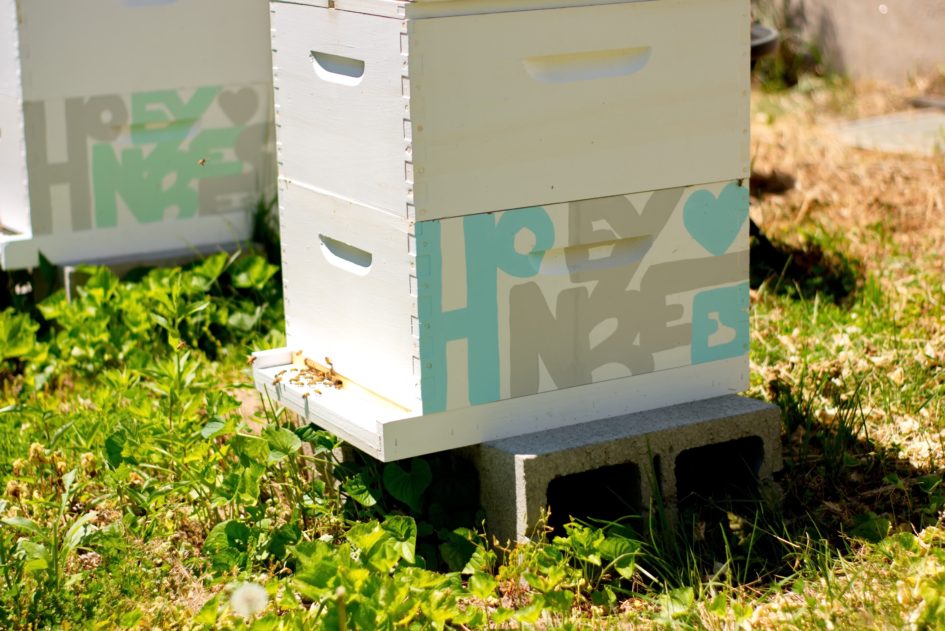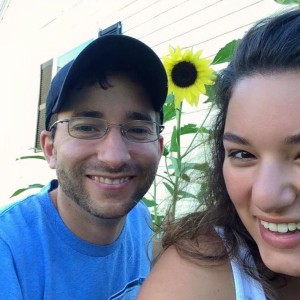Back for our fifth year summary of the growth of our property and lifestyle. Much of what we’ve done this year is beyond the garden so a few extra sections this year.
Honeybees
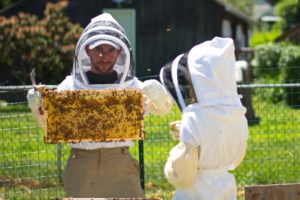
Our big addition to the garden production was the 2 bee hives we started up in the spring. We certainly have a lot to learn in the avenue of beekeeping, as evidenced by our inability to sustain them more than 6 months as both hives were lost in the first few weeks of heavy frost in October. While they were here we learned a lot about bees and their lives, and lovingly harvested 5-7 gallons of honey just between 2 small hives. We surmised our poor time management leading to the inability to do the hive inspections required caused us to not notice the lack of bee space. If we had noticed the lack of space we would have added more space or supers to give the bees more room to store honey. Next year we vow to have more scheduled days to do the inspections, note scheduled. Doing a two person inspection with a 1.5 year old is impossible, especially when inspections can last up to 2 hours. We are lucky to have grandparents near by who will gladly watch our kiddo for those future inspections.
Garden Production
As mentioned above we had some poor time management over the summer. A large part was the addition of 2 foster children (ages 2 and 4) through the 2 summer months of June and July. So over those two months we had a 1.5 year old, 2.5 year old and 4.5 year old. For as busy as we were we still yielded a good amount of produce. We must credit our garden for learning to be low maintenance due to our trial and error brand of gardening. We have certainly learned to listen to our limits.
Annuals
One of our goals was to eliminate outdoor water use from the tap, so this impacted some of our choice of vegetables to limit the water and energy use associated with irrigation. To this end our primary crop this year was sweet potatoes which require little to no water after establishment. Here is what we tracked:
- Sweet Potatoes – 2 milk crates full
- Purple Potatoes: 1/2 milk crate full
- Carrots: 4 lb
- Garlic: 65 bulbs
- Tomatoes: 6.5 lbs
- Cucumbers: 5 lbs
- Beans: 5.5 lbs
- Peas: 2 lbs
- Eggplant: 4.5 lbs
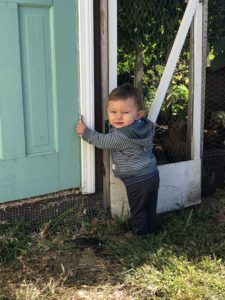
Chickens
The chickens are doing well, we reduced our numbers from 10 in 2018 down to 4-5 throughout the course of 2019 which has still given us more than we’ve needed but has reduced the amount of excess eggs so we no longer have many to sell. We hope to add at least one more but our luck with buying pullets (teen aged almost starting to lay chickens) and adding them to our flock has not been great. We still enjoy teaching neighbors and the kiddos in our life about keeping livestock for the family and where their food comes from.
Fruit/Berry Production
Another great year for raspberries, and the peach tree produced this year which was a welcome treat. We were able to process and freeze many of the peaches and berries. Our freezer is full of raspberries and peaches currently. We hope to be better at canning and preserving the fruit next year. Here is our yield:

- Raspberries: 9 lbs (an untold amount never made it inside, Spencer would inhale them off the bushes!)
- Peaches: 15 lbs
- Red Currant: 8.5 lbs
- Black Currants: 3.5 lbs
We planted some more new trees this year, another peach tree, a single grape vine, and a few other plants around.
Personal Carbon Footprint
We’ve started tracking our personal carbon footprint and what we can do year over year to reduce our impact. Here is what we used to track it: https://www.carbonfootprint.com/calculator.aspx
We had a small reduction from 2018, but we’re still hovering around 20 Tons of CO2 for our household of around 10 Tons each for Jenny and myelf. For some context, the average citizen in the US is 16, Europe is 6, global average is 5, and the target to combat climate change is 2. Below are some of the areas we focused on this year:
- We completely eliminated flying – We decided not to fly this year, kept vacations local and took the train when travel was necessary to really limit the impact of the emissions of flying. Even with all the little things we are doing, this is probably the single biggest way for us to reduce our emissions individually as flying has an out sized impact on emissions.
- Bought green energy as our electricity source via wind power – https://www.greenenergyconsumers.org/greenpowered/whyswitchingworks
- We ate mostly a plant based diet. Every meal we cooked at home this year was plant based, follow our Instagram for a record of each meal Jenny made.
- We completely eliminated water use outdoors by using rain barrels. It not only saved water (and cost), but eliminates the energy use of all the pumping and treatment of the water which can be substantial.
- Reel Mower – We replaced our gas mower with a human (i.e: me) powered reel mower.
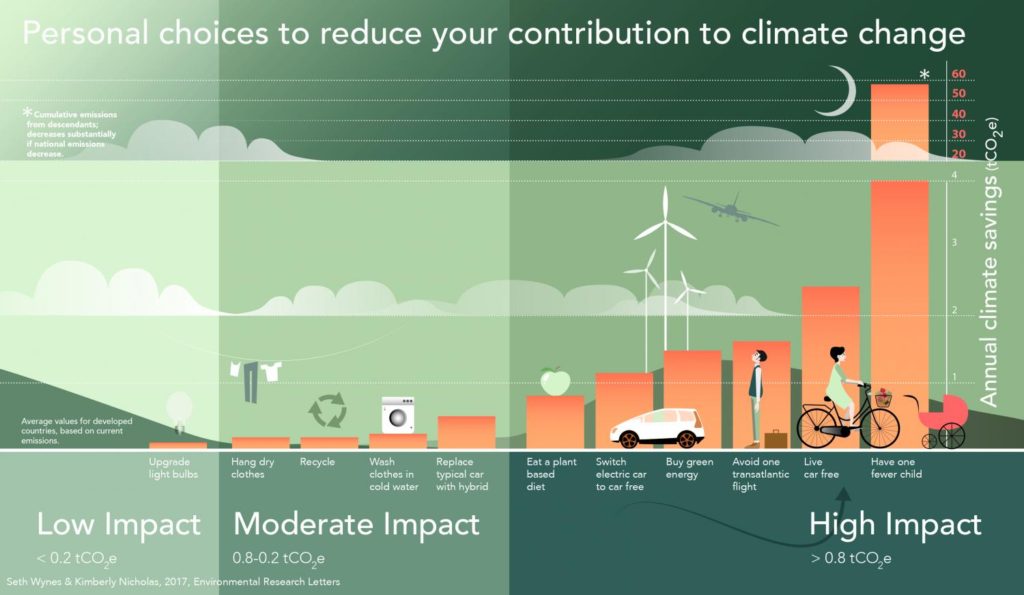
Personal Accomplishments
School Groups Tour – We have been lucky to have a school group walk down to tour our garden for the past several year. Although it is a short trip and usually in the Spring when there isn’t a lot to show it is still an accomplishment to us. One of the goals of our permaculture backyard experiment and a top reason for our location is to bring education to the people around us. Whether it is to remind people where their food comes from or even to inspire them to start their own experiment. So to have a group of young and excited minds come to see what we are doing right down the road from their school is a true honor. This year we had them help us dig up some self seeded catnip and strawberries and sent them home with them.
Limited Waste Production – Although it seems like small beans it has been a lifestyle change that started with a big transition that has since become habit and therefore part of our daily lives. If you followed our waste reduction tips from the beginning of last year you’ll know the variety of things we implemented. Reviewing said things we noticed everything we implemented is still in use today, a big personal accomplishment that leads to the way we’d like our lifestyle to be past the lengths of our lives and into Spencer’s future. We’d like to think our lifestyle has had some impact on normalizing good habits for the environment. This year our favorite grocery store Big Y completely eliminated plastic bags. We went from being part of the few who brought their own bags to just one of the many. An exciting shift in our own little community.
Professional Accomplishments
There has been many accomplishments this year including the evolution of some of the types of projects we are involved with at Sustainable Comfort. Not only has our team grown to 45 employees including 13 consultants, here are a few highlights of the past year:
- Completion of our first Passive House certified project – a 96 unit apartment complex in NY called CreekView Apartments. https://www.greenrater.com/consulting/projects/creekviewapartments/
- Worked with multiple winning teams in the Buildings of Excellence competition, with 4 of our teams winning nearly $4 Million in incentives to produce low carbon apartment buildings that can lead the way to demonstrating scalable net-zero energy, and low carbon construction practices. https://www.nyserda.ny.gov/About/Newsroom/2019-Announcements/2019-10-29-Governor-Cuomo-Announces-18-Million-in-Award-Winning-Projects-in-First-Round-of-Buildings-of-Excellence-Competition
- Working with a modular construction factory in Geneva NY producing net-zero energy small living communities. https://www.laketunnelsolarvillage.com/
- In 2020 we’re looking forward to partnering with a developer to develop a plan to bring their entire building portfolio to Net-Zero Energy.
- Ranked one of the fastest growing companies, #1061 fastest growing company in the country https://www.inc.com/profile/sustainable-comfort
In addition to these projects, we’ve started taking a more direct training and advocacy role this year. In just the last 6 months I’ve spoken at several major conferences, events, and architecture firms, including:
- “The case for sustainability in affordable housing” – New York State Affordable Housing Conference
- “Informing Developers Decision Making for High Performance Buildings” – NYSERDA Multifamily Summit
- “Energy Modeling: Creating Resilient, Healthy, Efficient Buildings” CT Green Bank Contractors Conference
- “High Performance Multifamily Buildings – Passive House & Existing Buildings” – Presented at 3 major architecture firms
- “Passive House and All Electric Building Technologies” – Presented to the board of directors and staff of a developer
- Hosted a Northeast Sustainable Energy Association Pro Tour at the CreekView project in Canandaigua
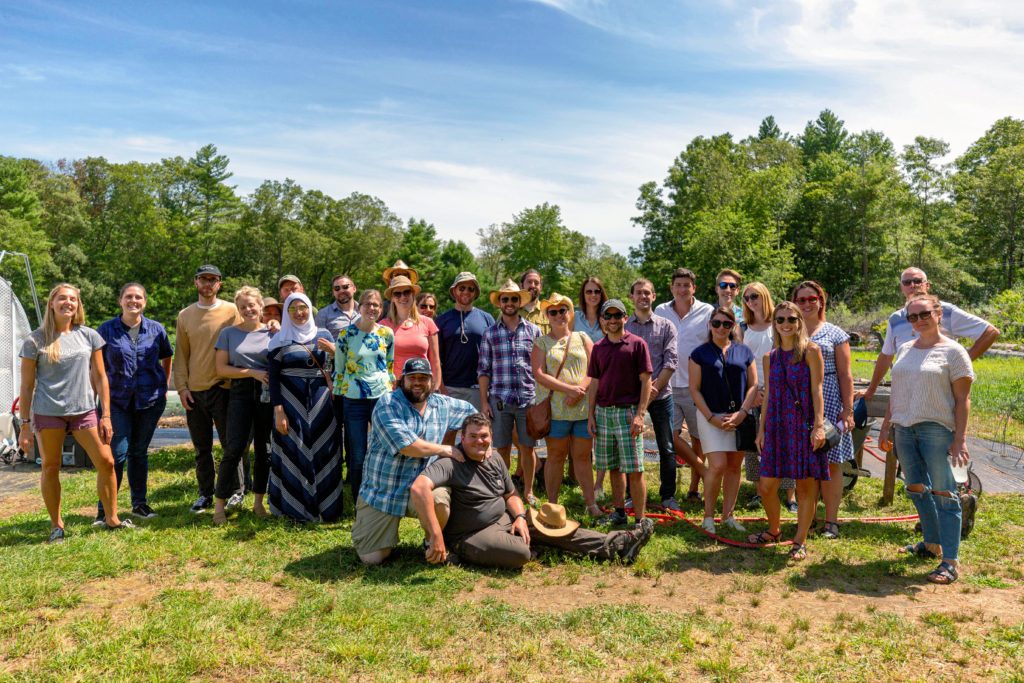
We look forward to 2020, and really would like to spend some time and effort into shifting our mindset from just reducing our negative impact, to seeing what we can do to have a positive impact. What can we do to sequester carbon in our landscape, to support projects to restore the natural environment to a healthier state. Thinking in terms of making positive impacts can really help shift our mindset from being limiting, to one where expanding what we do will have a larger positive impact, rather than just reducing what we do to limit our negative impact.
Share Now!